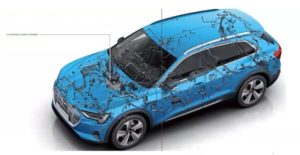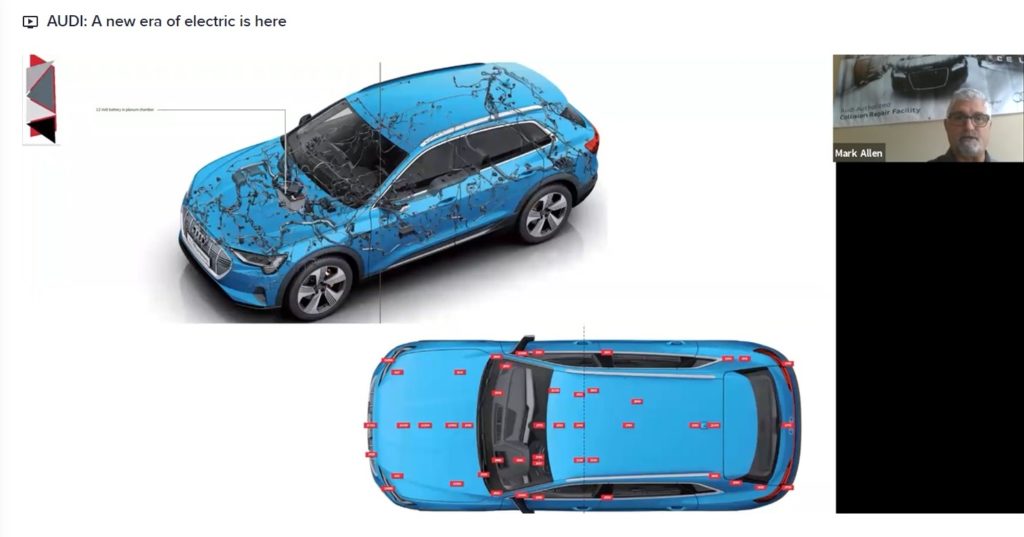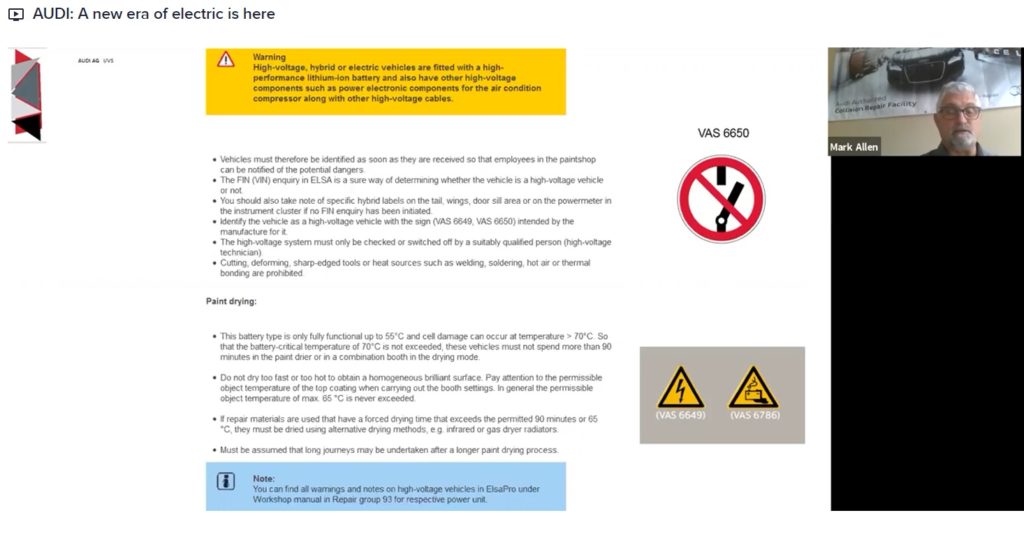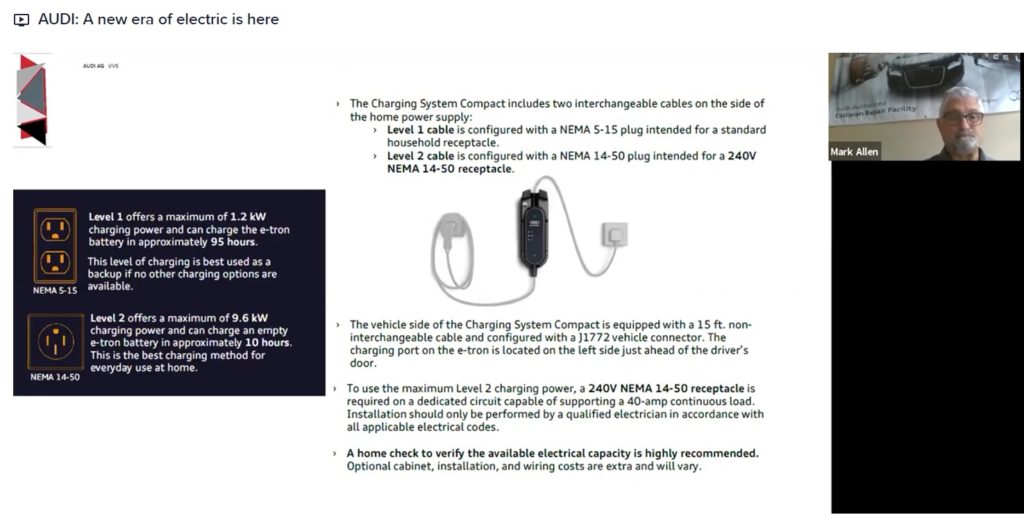
Audi: 12V battery important too on electric e-tron
By onAssociations | Business Practices | Repair Operations | Technology
Though the Audi e-tron’s mammoth, high-voltage battery is the star of the electric SUV’s show, repairers shouldn’t overlook the importance of the familiar 12-volt battery also found in the vehicle.
The e-tron relies upon the 12-volt battery to get the massive, 95 kilowatt-hour battery up to voltage, according to Audi collision programs manager Mark Allen.
“It controls the controller,” Allen told a virtual OEM Collision Repairer Technology Summit session released in November 2020. The Audi video and more than a dozen other Society of Collision Repair Specialists’ virtual Repairer Driven Education courses are available for replay through Aug. 31.)
“As I keep saying, you need to go and follow the OE repair procedures and use the OE diagnostic,” he said.
If the shop just removes the 12-volt battery lead, it will trigger diagnostic trouble codes and make re-energizing the high-voltage battery a “much harder thing,” he said. (An e-tron’s main battery must first be de-energized by a qualified technician before certain collision repairs can occur.)
“It drives so many of the controllers, safety, ADAS comfort and other systems,” Allen wrote of the 12-volt battery in an e-mail Feb. 5. “Even disconnecting it while following the guided plan in ODIS is imperative. If it is not done correctly there will be codes thrown and you may not be able to re-energize the HV battery if not done right.”
The top graphic in the slide above depicts all the wiring and systems tied to the 12-volt battery, according to Allen.
The bottom image shows all the major controllers and ECMs running off it, he said.
“It’s still relevant,” Allen said.
Most of Allen’s video OEM Summit presentation dealt with high-voltage safety. But he did mention a couple of other battery details beyond the 12-volt guidance.
Paint booths
Allen warned against leaving an e-tron in a paint booth for more than 90 minutes because of the battery’s sensitivity to heat.
“This battery type is only fully functional up to 55°C and cell damage can occur at temperature > 70°C,” Audi states in language highlighted in one of Allen’s slides. “So that the battery-critical temperature of 70°C (158 degrees Fahrenheit) is not exceeded, these vehicles must not spend more than 90 minutes in the paint drier or in a combination booth in the drying mode.”
However, Audi also advised shops to “Pay attention to the permissible object temperature of the top coating when carrying out the booth settings. In general the permissible object temperature of max 65°C (149 degrees Fahrenheit) is never exceeded.” The OEM told repairers to substitute an alternative drying method if repair materials would have a forced drying times above 90 minutes or 65 degrees.
“It’s really gonna force some of the issues if you have a large repair job where you need to have it sit in there,” Allen said. A shop might need to deploy more forced air or rely in infrared drying to get the vehicle dry in time.
Charging
The Audi e-tron comes with a Level 1 charger which can plug into a typical 110-volt outlet. However, this means a “very long time” spent charging. Giving the vehicle a full charge would take 95 hours, according to a slide from his presentation.
However, you can also connect the e-tron to a Level 2 240-volt outlet with a 40-amp capability, according to a presentation slide. It’ll charge an e-tron in 10 hours.
A repairer handling many electric vehicles might wish to set up the appropriate capabilities in their shop so as to return a charged vehicle to a customer, Allen suggested.
More information:
“A new era of electric is here” featuring Audi (replayable through Aug. 31, 2021)
Society of Collision Repair Specialists, November 2020
Audi Body-Collision eSelf Study Program 200193
Images:
Wiring and systems tied to the 12-volt battery of an Audi e-tron, according to Audi collision programs manager Mark Allen. (Provided by Audi)
The top graphic in this slide depicts all the wiring and systems tied to the 12-volt battery, according to Audi collision programs manager Mark Allen. The bottom image shows all the major controllers and ECMs running off it, he said. (Provided by Audi)
Audi warns against subjecting the e-tron battery to excessive heat. (Provided by Audi)
An Audi e-tron can be charged with 110-volt and 240-volt home outlets. (Provided by Audi)



